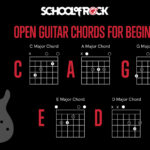When you consider the iconic Flying V, Gibson’s version immediately springs to mind, often accompanied by a hefty price tag. With a Manufacturer’s Suggested Retail Price (MSRP) around $1499.99, plus an estimated $119.99 for a case, the total investment reaches approximately $1,619.98. But what truly differentiates a Gibson Flying V and warrants this cost compared to more affordable alternatives?
The answer lies in a combination of factors, starting with the components. Gibson models typically boast superior pickups, fretboard materials, and bindings. The paint job itself is a significant differentiator. Gibson often employs a labor-intensive nitrocellulose lacquer finish. Achieving a flawless nitro finish demands numerous meticulous steps and considerable time, a stark contrast to more cost-effective finishes. Furthermore, subtle differences like neck profiles and potentially higher-grade electronic components (switches, pots, and wiring) contribute to the overall value. Even the mahogany wood used in Gibson Flying V guitars is often of a higher grade compared to budget-friendly versions.
Ultimately, the crucial question for any guitarist becomes: Is the premium commanded by a Gibson Flying V, potentially thousands more than alternatives, truly worth it? This is a deeply personal decision best evaluated by A/B testing guitars through your own amplifier. Assess if the feel, sound, and prestige of a Gibson justify the extra expense for your needs. While a nitro finish might impart a unique feel, sometimes perceived as more delicate, the essence boils down to playability, tone, and intended use.
For home practice, either option might suffice, making budget the primary guide. However, for gigging musicians in smaller venues where gear theft is a concern, a less expensive Flying V variant could be a more practical choice. The financial sting of a stolen high-end guitar, especially one comparable to a car’s value, is considerable. Conversely, for bands recording or performing in larger, secure venues, the superior qualities of a Gibson Flying V might become more justifiable. Some musicians even opt for both: a premium Gibson for studio work and high-profile performances, and a more affordable option for less secure environments. In the end, your specific circumstances and priorities will dictate whether the allure of a Flying V Gibson Guitar aligns with its price.


